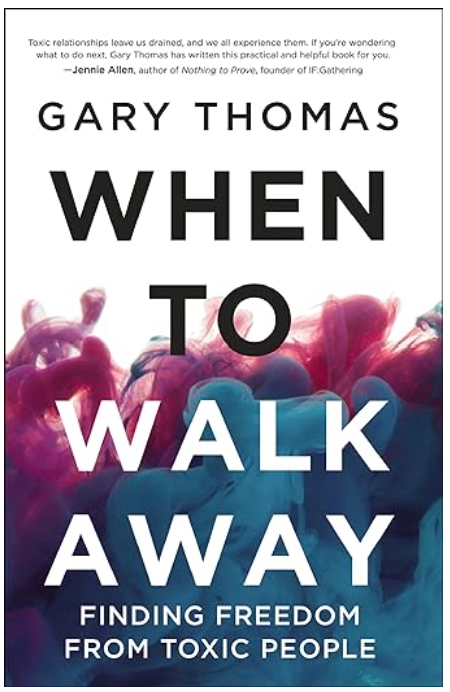When to Walk Away – The Power of Letting Go: Knowing When to Walk Away from Toxic Situations
The Workplace Problem: When Is It Time to Stop Trying?
Leaders and employees are often told to push through difficulties, resolve conflicts, and never give up. But sometimes, the best decision isn’t to fight—it’s to walk away.
HR professionals and executives struggle with knowing when to persist and when to disengage—whether it’s dealing with toxic employees, unproductive workplace conflicts, or draining negotiations.
So how do you know when it’s time to let go?
What This Book is About
In When to Walk Away, Gary Thomas explores the mental, emotional, and strategic side of walking away from toxic situations—not out of weakness, but out of wisdom.
This book helps leaders and employees recognize when conflict resolution isn’t possible and when leaving a situation is actually the healthiest, most productive choice.
Key Takeaways for HR and Workplace Leaders
Not Every Conflict is Worth Solving – Some workplace situations can’t be fixed, and staying in them only drains energy and morale.
Toxic People Thrive on Control – Not all workplace conflicts are rational—some are driven by people who manipulate, create chaos, or refuse to engage in good faith.
Walking Away is a Strength, Not a Failure – Recognizing when to disengage is a critical leadership skill.
Energy Management Matters – Time and energy spent on unresolvable conflicts take away from more productive work.
Healthy Boundaries Strengthen Workplace Culture – Organizations that allow toxic behaviors to continue lose their best employees and create a culture of frustration and burnout.
Workplace Tools and Models from the Book
The "Toxicity Checklist" – A tool to assess whether a workplace situation is worth investing in or if it’s time to walk away.
The "Energy vs. Outcome" Model – A framework to measure whether continuing a conflict brings real benefits or just drains resources.
The "Strategic Disengagement" Approach – How to leave a conflict gracefully, without damaging reputation or burning bridges.
The "Five Signs It’s Time to Walk Away" Rule – Recognizing when a negotiation, dispute, or toxic relationship has reached a dead end.
Why This Matters for HR and Workplace Leaders
HR professionals and managers are often caught in the middle of difficult workplace situations. When to Walk Away provides strategies to:
✔ Recognize when an employee or leader is too toxic to rehabilitate.
✔ Decide when to stop negotiating and move on.
✔ Help employees set boundaries and protect their energy.
✔ Prevent HR burnout from dealing with persistent workplace dysfunction.
How This Connects to Workplace Assessments and Restorations
Many workplace assessments reveal ongoing struggles with toxic individuals or unresolved workplace issues, such as:
Employees feeling trapped in unhealthy team dynamics.
Leaders exhausting themselves trying to fix unfixable problems.
Workplace culture suffering because toxic behaviors are tolerated.
By applying When to Walk Away principles, HR leaders can help employees and teams refocus their efforts on productive, meaningful work instead of getting stuck in endless, unwinnable battles.
How Can You Apply This?
➡️ Are workplace conflicts draining energy without real progress?
➡️ Are certain employees, leaders, or teams creating persistent dysfunction with no signs of change?
Knowing when to walk away from the wrong battles frees up energy for the right ones.
Where to Buy
Interested in reading When to Walk Away? You can purchase it here:
📚 Amazon
📚 Gary Thomas’ Official Site

